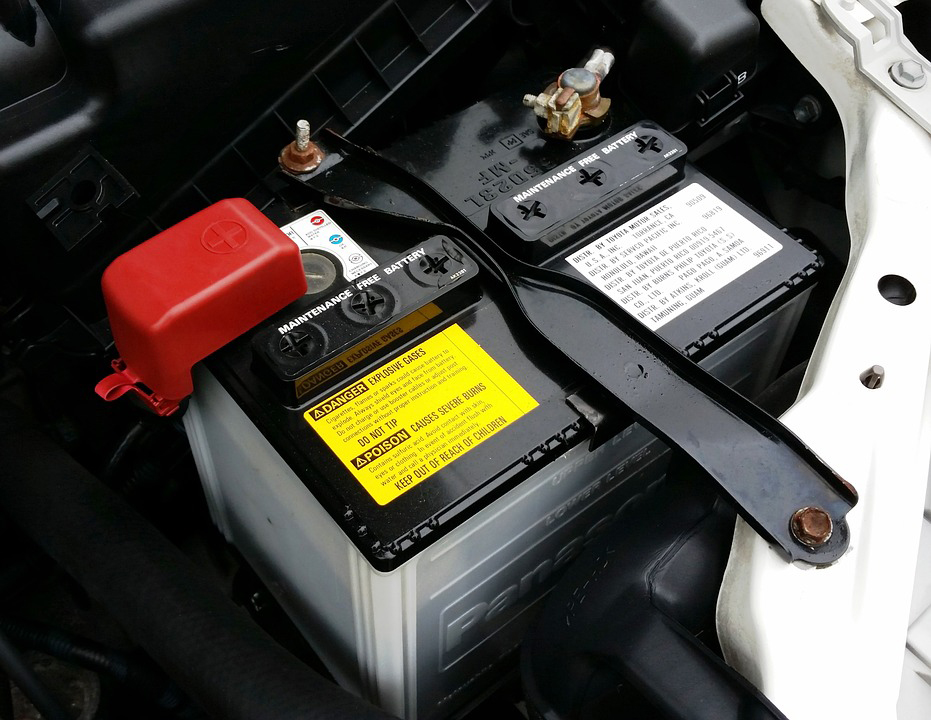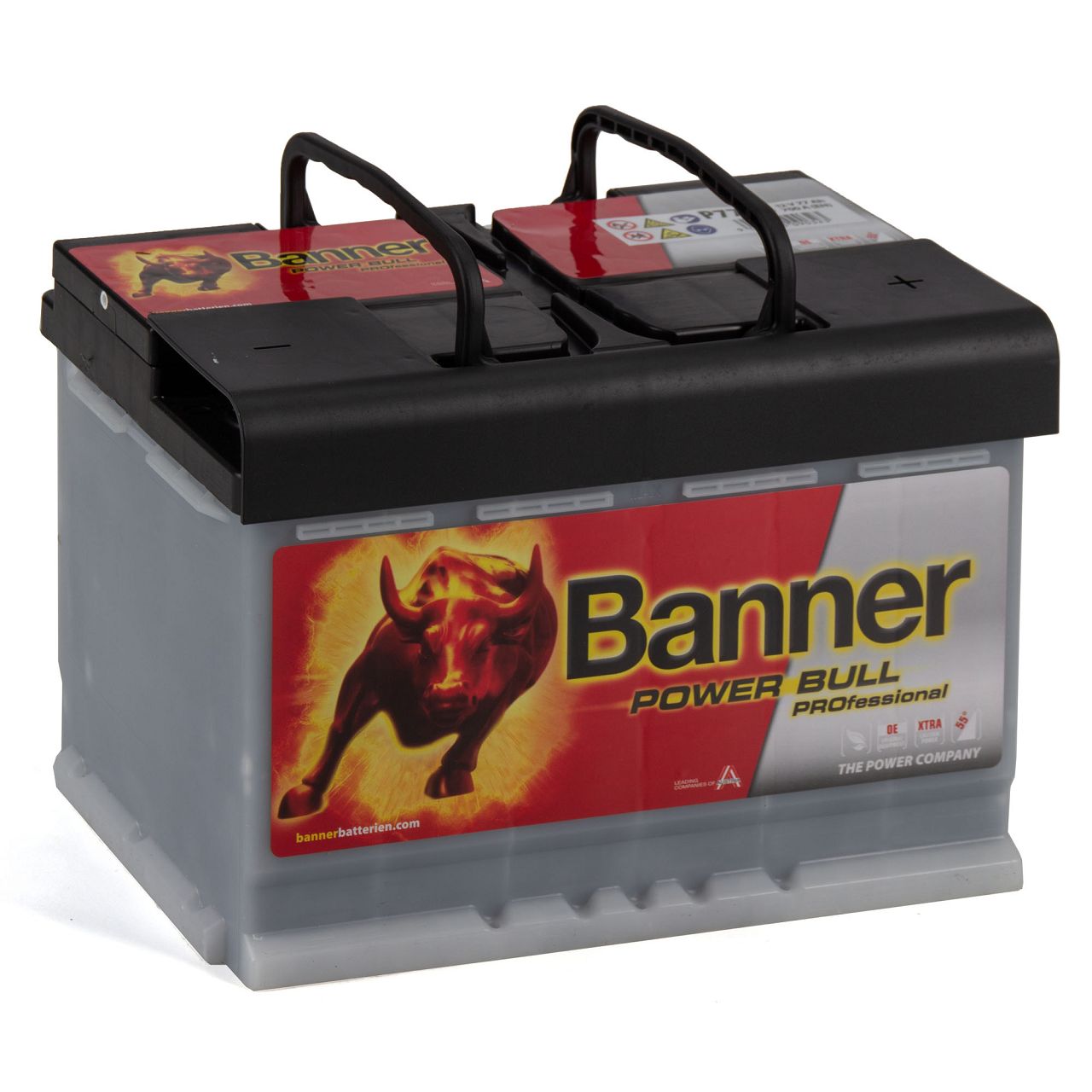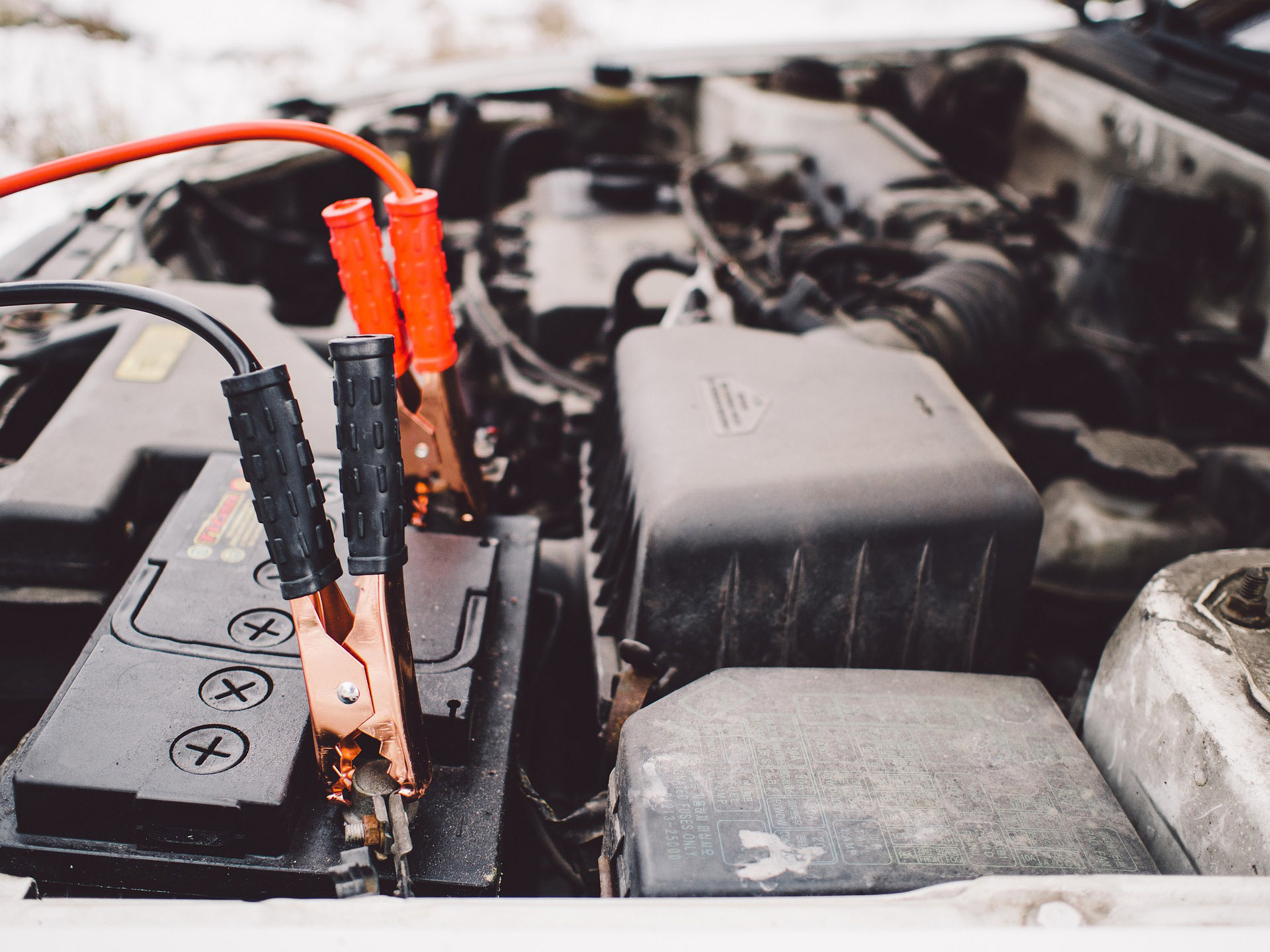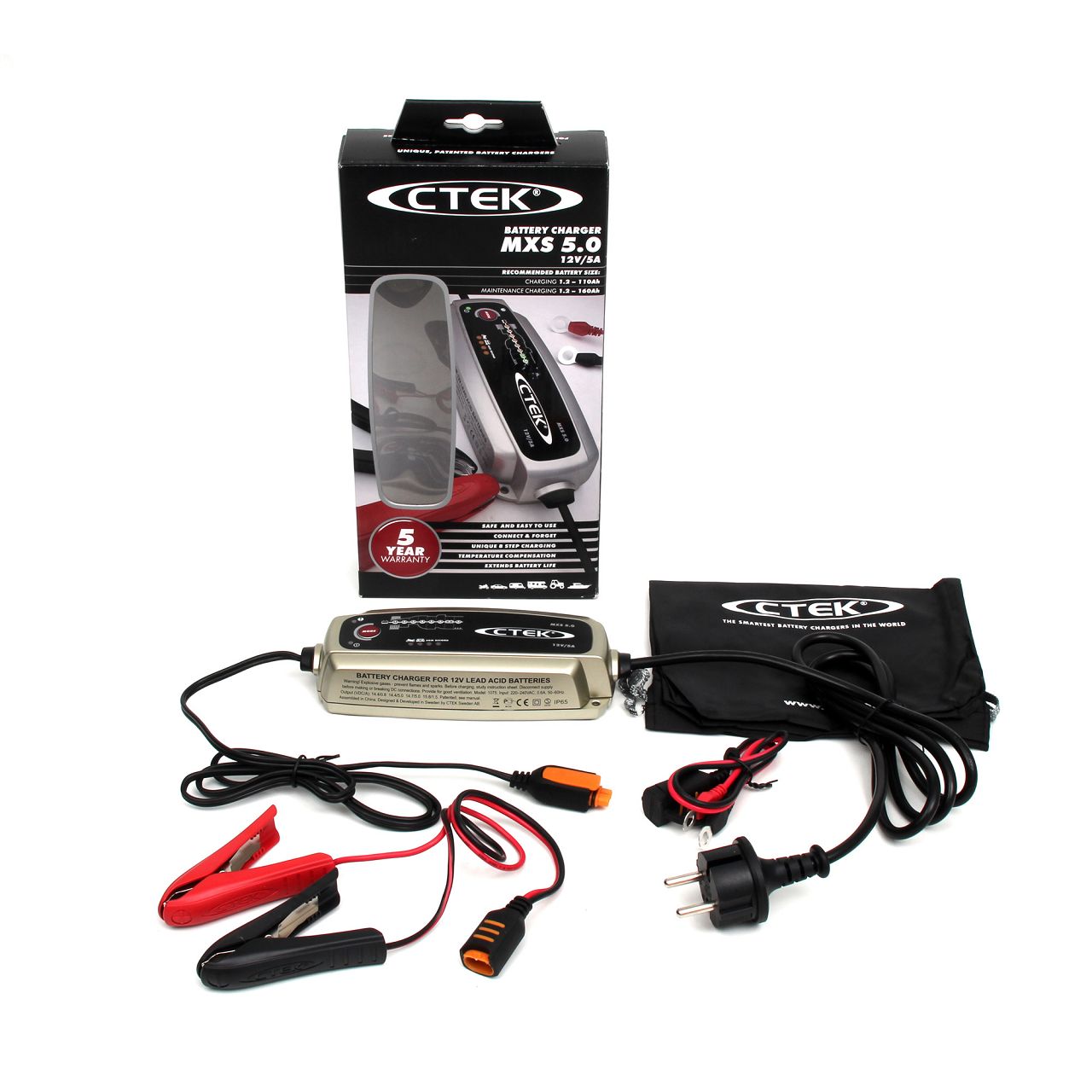product comparison
Interesting facts about the starter battery, battery replacement and starting aid
In general, starter batteries can be divided into three different car battery types. The three battery types wet batteries, EFB batteries & AGM batteries have a lot in common, but they also differ in essential points. All in all, the starter batteries have become less susceptible to faults and require significantly less maintenance due to further developments in recent years. Most of them are now even maintenance-free starter batteries. This means that the batteries no longer have to be filled with distilled water, as was common a few years ago. In order to meet the changed and increased technical requirements of automobile manufacturers - such as the start-stop function - the battery types EFB battery and AGM battery were developed, which have a particularly high performance.
Directly to battery replacement
Directly to the jump start
Directly to car charger
The wet battery - the conventional car battery

The conventional starter battery is a wet battery and is also called an SLI battery. The abbreviation SLI stands for the three main tasks of the car battery: Starting, Lightning and Ignition. The conventional starter battery was designed for a short high energy boost during the starting process. The vehicle's internal charging system then recharges the energy taken from the battery and supplies the electrical consumers. This type of starter battery is suitable for vehicles without start/stop function and those with only a few electrical loads. Lead-acid batteries, such as the wet battery, are still the best compromise between reliability, robustness, price and recyclability.
Starter batteries for vehicles with start/stop function - EFB battery & AGM battery
- EFB battery
The abbreviation "EFB" stands for "enhanced flooded battery". In principle, EFB batteries are performance-enhanced and optimized conventional starter batteries (wet batteries). EFB batteries convince with a high number of possible charge cycles and offer a higher discharge performance (both partial and deep discharge) compared to conventional starter batteries - in short: many charge cycles and a long service life. Often, starter batteries with EFB technology are installed in vehicles with a simple start-stop automatic. - AGM battery
The AGM battery owes its name to a built-in component: a glass fibre separator - "absorbent glass matt". AGM starter batteries are the best energy storage devices for vehicles with automatic start-stop systems with brake energy recovery, as conventional starter batteries cannot meet these extremely high performance requirements. AGM batteries also have a particularly long service life. Unfortunately, these advantages are also associated with a higher price than for other starter batteries. For many vehicles with particularly high energy requirements and a high number of electrical consumers, the AGM battery is an absolute must .
How to change the car battery? Which car battery should I use?

Before you can start replacing a starter battery, you have to clarify which car battery you need. Normally 12V batteries are installed in most vehicles in the automotive industry. Exceptions are large commercial vehicles or special vintage cars. The most important characteristics of the starter battery are the capacity and the cold start current. The capacity is given in the unit Ah (ampere hours) and describes the amount of charge that can be removed from the car battery before it is completely discharged. Depending on the vehicle, the value can range from approx. 30Ah to 120Ah. The cold current is given in Ampere(A) and describes how much current a battery can deliver for 30 seconds at -17.8 degrees and has a voltage of at least 1.2 volts. When purchasing a new car battery, you should make sure that these two values correspond to the installed battery (slight deviations are possible).
If the installed car battery is not the original starter battery and the vehicle had another previous owner, it is advisable to check in the logbook which starter battery is needed. In addition to the two technical figures, the dimensions of the car battery are also relevant. Measure the installed car battery once and compare the values with those of the new ones. It can happen that despite the same technical values, the dimensions of the car batteries are different. In addition, if you have installed an EFB or AGM battery, make sure to use one again. These are installed in the vehicle due to the start/stop function and the number of consumers. Conventional car batteries no longer meet these requirements.
After the appropriate starter battery has been determined, you can start to change the battery. The following things should be considered:
- As with most repairs and work on the car, gloves and safety glasses are mandatory. As a rule, no special tools are required to change the battery. A screwdriver, a wrench and pliers (insulated) are helpful for removing the battery.
- The first step is to remove the old starter battery. First disconnect the negative terminal or the black/blue cable, otherwise flying sparks may occur. Therefore the nut at the negative pole has to be loosened and then the cable can be disconnected.
- Then disconnect the red cable and remove the cable from the starter battery.
- After that, the battery fixation brackets are loosened and the old car battery can be removed.
- After removing the battery, you can continue to insert the new starter battery. The procedure is now reversed, first connect and fix the red cable (positive pole), then the negative pole.
Tip: The contact point is protected from moisture and oxidation by the application of pole grease. This will extend the life of the car battery. - Finally place the pole caps on the battery poles (also protect the poles) and replace the battery holder/cover.
Thus it is not particularly complicated to change a battery by following the sequence. Starter batteries are in most cases maintenance-free, which does not mean that they no longer require maintenance. Remove dirt from the battery and regularly check the poles of the battery to prevent the battery from slowly discharging. This care will prolong the life of your starter battery and you won't have to change it as often.
To the starter battery rangeHow do I give jump start with a jump lead?
In the cold season there are more problems with the starter battery. Frequently it happens on the way and the use of a battery charger is not possible without further ado. In these situations it is an advantage to always carry a jumper cable in your vehicle. A Jumper cable is not expensive and can already be purchased in our shop from 8.95 EUR. In order to be able to use the jumper cable in an emergency, you should know how to properly bridge a starter battery. The procedure is relatively simple and easy to master, if you consider the following things:
- First the red cable must be connected to the positive pole of the dispenser car and then to the positive pole of the empty starter battery.
- The black jump lead is connected to the negative terminal of the donor car's starter battery, the other end of the lead is connected to a free metallic spot on the breakdown car's engine block or grounding point (see operating instructions for details).
- It is important not to connect the black jumper cable to the starter battery of the breakdown car. Connecting to the terminal may cause flying sparks.
After you have connected the jump leads to the vehicles, you can start the donor car. After about 5 minutes you can try to start the car. If the car starts, it is advisable to switch on the larger consumers (e.g. light, fan and radio) so voltage peaks can be avoided. Switching on the loads helps to protect the on-board electronics.

The jumper cables can now be removed while the engine is running. First disconnect the black jumper cable from the donor vehicle's starter battery and then from the breakdown car. The next step is to remove the red jump lead. Switch off the additional loads, close the bonnet and pack the jumper cables again. You can continue driving carefully. Try a slightly longer drive at the highest possible speed to recharge the starter battery. You should avoid stalling your car to avoid having to reach for the jump lead again, as the starter battery may still be too weak for a new start.
Is it a good idea to push your car?
If your car won't start and there is no jumper cable or other jump start to be found far and wide, pushing it is the next possible option.Never do this alone, but get at least one person to help you. Get behind the wheel and step on the clutch pedal. Now put the car in second gear and release the handbrake. Now your helpers must push hard to get the car rolling. Turn the ignition key to ignition, now let the clutch come up and additionally give some gas. In the best case, this should start the engine.
If possible, it is easiest to push on downhill. It is important that neither the power steering nor the ABS work during the process. Therefore, it is best to turn the wheels in the desired direction beforehand and avoid braking. Once the car has started, you should drive for at least 30 minutes at a time, or even longer, so that the battery can recharge. In the process, switch off the automatic start-stop system so that the car does not go out again at an intersection.
Be aware of the following important points when starting the car:
- Push-starting is only possible with a gasoline engine with a manual transmission.
- The car must not have a catalytic converter. Because a push can not burned gasoline into the catalytic converter and damage it.
- To push a car with diesel engine is only conditionally possible. For this, there must still be enough current in the starter battery to be able to heat up the glow plugs. Otherwise, a Anschieben not possible.
Vehicles with an automatic transmission can not be pushed on principle. The hydrodynamic torque converter in the transmission will put a spoke in your wheel. This is because it is responsible for transmitting power from the axle to the engine and only works when the engine is switched on.
Caution is also required when towing automatic vehicles. Because the torque converter just mentioned must be permanently supplied with oil when driving. When the engine is switched off, the pump responsible for it cannot build up the necessary pressure and the transmission parts run dry. Therefore, towing is only possible if the engine can still run. Then shift to neutral (N). In an absolute emergency, an automatic car can be towed up to 80 km. Whether a four-wheel drive car can also be towed is determined by each car manufacturer. You will find more detailed information in the owner's manual of your vehicle. The safest thing to do is to call the towing service when your car breaks down.
How do I use a battery charger?

Battery chargers are a good supplement and partly also good alternatives to the jump lead. We describe the use of a battery charger using the example of the CTEK MXS 5.0. The use of another battery charger is very similar in most cases and works according to the same pattern. First, connect the battery charger's contact cables to the battery terminals. If the starter battery is still connected to the vehicle, first connect the red terminal to the terminal and then the black one to the body. In the second step, the battery charger is connected to the socket using the mains plug. It is important that you do not swap the poles, otherwise the battery and charger may be damaged. Some battery chargers, like this one, have reverse polarity protection built in to protect the battery and charger. With the CTEK MXS 5.0 the charging program can be selected via the MODE button, so all types of starter batteries can be charged, from the small scooter battery to the AGM battery.
When purchasing a battery charger, you should therefore make sure that it is suitable for your type of starter battery. After selecting the charging program, the charging process begins. As soon as step 7 lights up, the charging process of the battery charger is completed. Unplug the battery charger from the socket. Then first remove the black terminal and finally the red terminal. In addition, some battery chargers offer so-called reconditioning programs, which serve to maintain the battery life and the battery no longer needs to be changed so quickly. The battery charger CTEK MXS 5.0 has such a program under the name RECOND.
The advantage of battery chargers over the jumper cable is that the battery is also charged and does not only help during the starting process. The charging process takes place by the way and does not have to be done by driving longer distances, so it also saves high fuel costs. There are also battery chargers with rechargeable batteries that can be used for mobile applications. Please note that the charging power can suffer particularly in cold temperatures. Battery chargers with mains plugs are therefore more fail-safe. If you have any further questions about our battery chargers, please feel free to contact our customer service.
To the battery charger assortment












